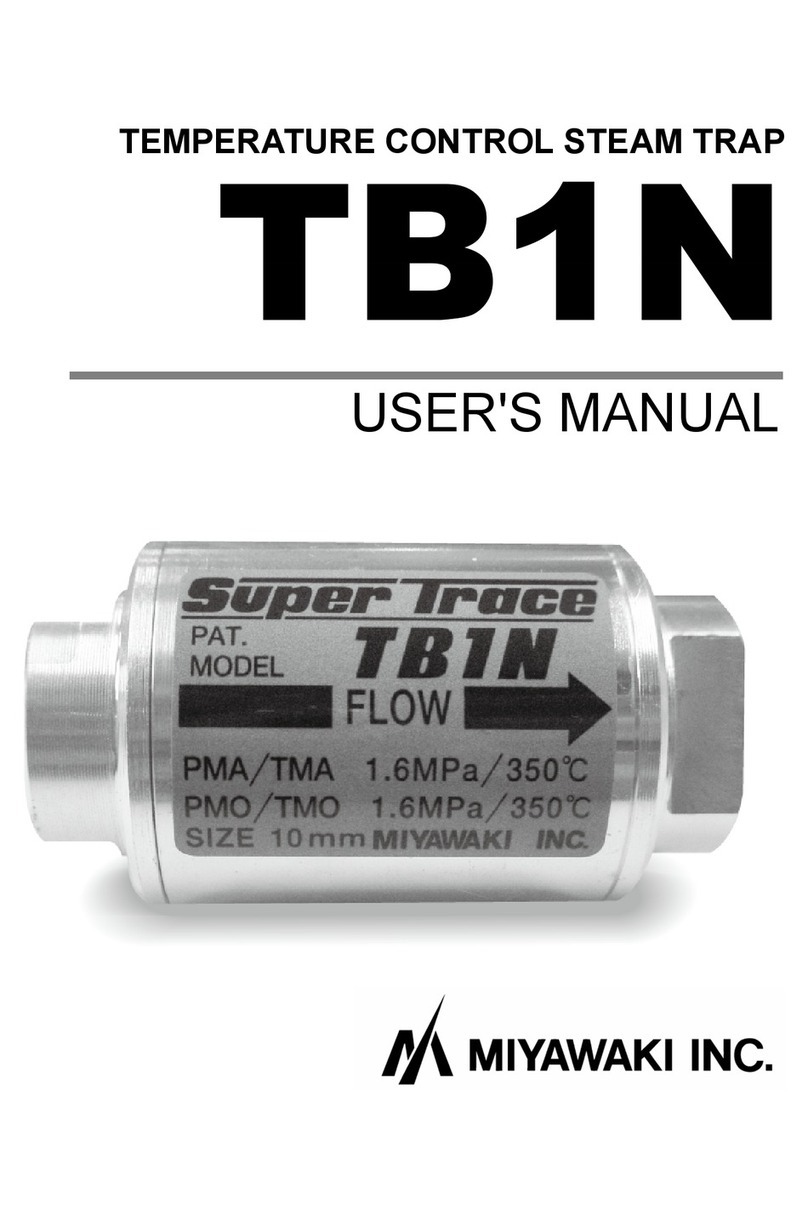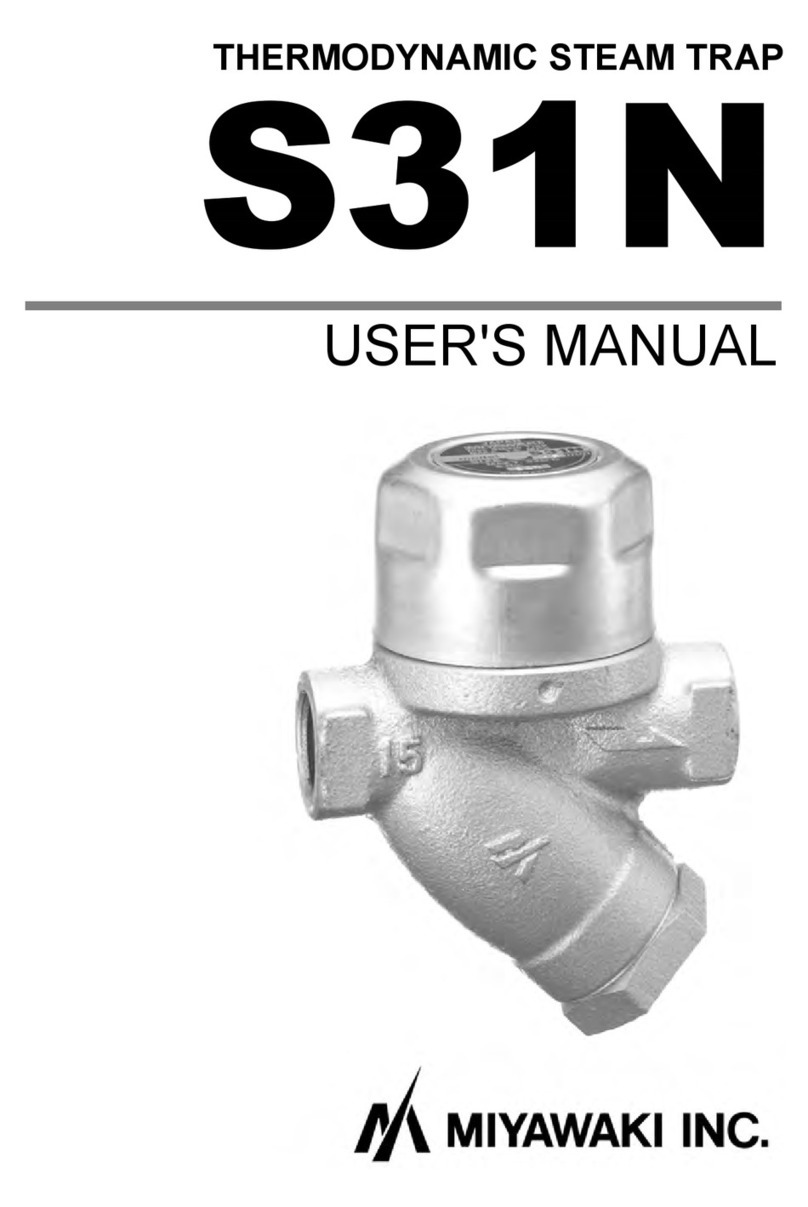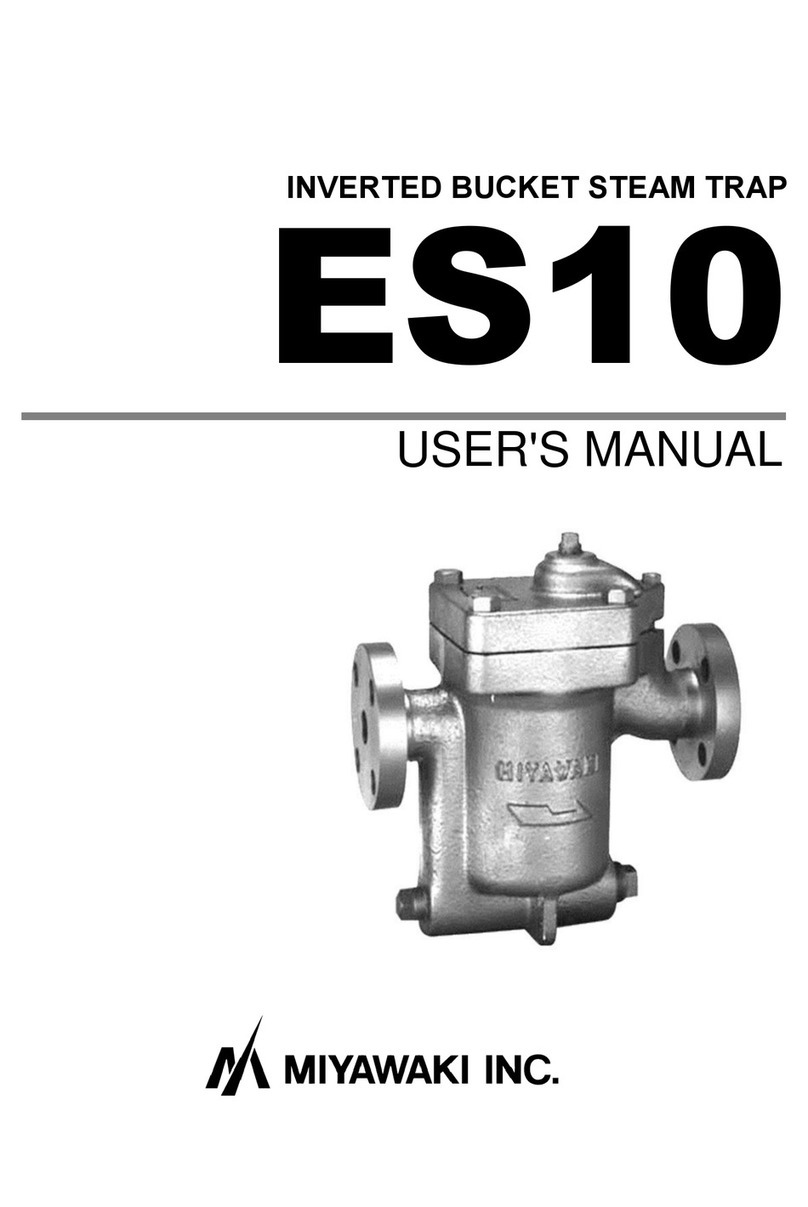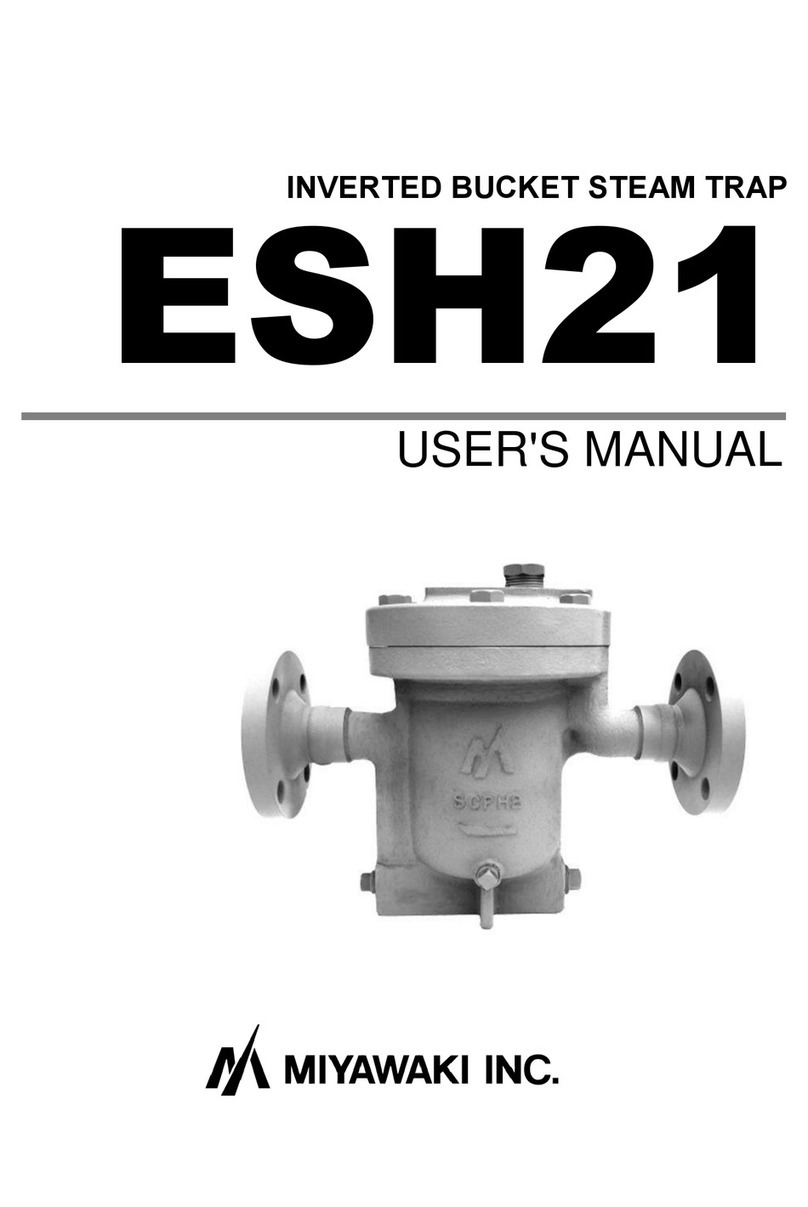
7.1 Warranty period
The warranty period is 18 months after shipment or 12 months after installation, whichever
occurs first.
7.2 Details of the warranty
If the product stops working correctly within the warranty period, we will repair or replace
the product free of charge if the cause of the trouble is not one of the following items.
1) The precautions described in this manual were not observed.
2) User's errors or mistakes such as an inappropriate installation or incorrect handling,
or an excessively large impact caused by dropping
3) Problems caused by devices or equipment other than MIYAWAKI’s, or a disallowed
use environment
4) When a repair or modification has been performed by anyone other than MIYAWAKI
or people who are authorized to make such repairs
5) Intrusion of salt or other substances that promote significant rust or corrosion or
problems from fluids that contain the same substances
6) Consumable parts such as Packing, Gasket, O-ring, Diaphragm, etc.
7) Attachment or accumulation of foreign matter in the pipe, such as dust and scale
8) Problems from fires, natural disasters, or other force majeure which is not
MIYAWAKI’s responsibility
7.3 Warranty limitation
The remedy available under the warranty shall not exceed the sales price of the products
delivered, for any cause whatsoever.
8
Problem Possible cause Solution
through.
Scale and/or dirt lodged
between valve (7) and valve
seat (5).
The air vent (15) is damaged. Replace the air vent (15) as a
whole.
Piece of scale lodged between
valve and seat of the air vent
The bypass valve is open. Close it.
Worn valve (7) and/or valve
seat (5).
Replace the valve (7) and/or
the valve seat (5).
The valve seat (5) is loose. Retighten the valve seat (5).
The set bolt (11) is loose. Retighten the set bolt (11).
The air vent (15) is loose Retighten the air vent (15).
The cover gasket (12) and/or
seat gasket (6) are worn. Replace the gaskets.
The cover bolts (13) are loose
or uneven tightened. Retighten the cover bolts (13).
The valve seat (5) is clogged. Clean the valve seat (5).
The float (3) is damaged or
filled up with water. Replace the float (3).
The inlet valve is closed. Open the inlet valve.
The strainer at the inlet pipe
side is clogged. Clean the strainer.
The operating pressure is too
high.
pressure or select a trap for
The capacity of the trap is too
low.
Check the operating conditions
and select a trap with higher
capacity.
Scale and/or dirt lodged
between valve (7) and valve
seat (5).
Clean the valve (7) and the
valve seat (5).
Condensate cannot flow
naturally into the trap. Change the piping.
Lack of differential pressure.
Check the operating
conditions.

































